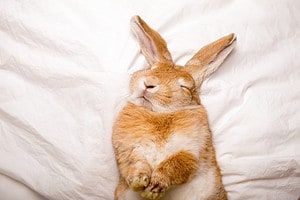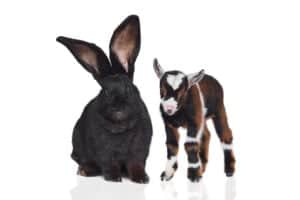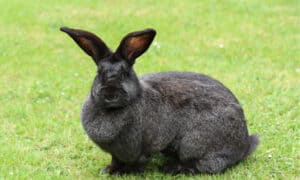Crossbreeding of German Big Lops with small Chinchilla rabbits resulted in the adorable, cuddly, energetic bunny breed known as the Mini Lop. These furry animals frequently are brought home as pets, thanks to their compact size and friendly personalities. But where do they rank in size compared to other minis?
Let’s take a look and find out.
What Is a Mini Lop Bunny?

Mini lops are easily recognizes for their long, lopped (floppy) ears. The adorable critters are considered medium to small bunnies.
©iStock.com/Ornitolog82
The mini lop rabbit is a popular pet rabbit breed. They’re extremely cute, with floppy ears, big eyes, and friendly personalities. With abundant energy and loads of cuddly, dense fur, they’ve been chosen as one of the most popular pets for folks all over the world.
Common Mini Lop Characteristics
These adorable, small bunnies earn their names well, thanks to their appearance.
- Long, floppy (lopped) ears
- Button noses
- Big, emotive eyes
Overall, the breed is small, cuddly, and energetic. They bear thick, stocky bodies with wide hind portions and dense fur, in compact form.
How Big Do Mini Lops Get?
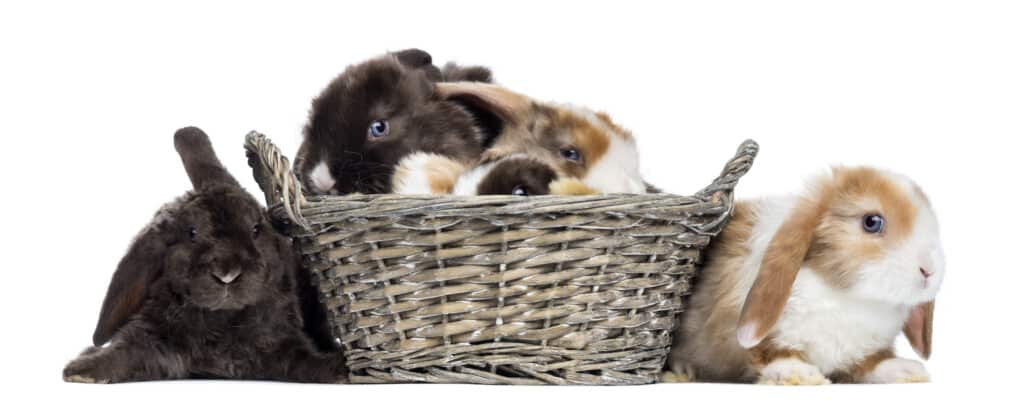
Mini Lop babies, called kittens, are typically born in litters of four to ten. These tiny bunnies start out at only 1.5 ounces at birth!
©Eric Isselee/Shutterstock.com
Mini lops typically weigh between 3 and 6 pounds when fully grown. They typically reach 4 to 5 inches at shoulder height.
What Determines the Size of a Mini Lop?
Several factors may play into the exact size of a given mini lop bunny. Most of them cannot be altered, but things like nutrition, particularly during the first several months of a rabbit’s life, may be changed.
- Heredity
- Sex
- Diet and nutrition
- Health
When Do Mini Lops Stop Growing?
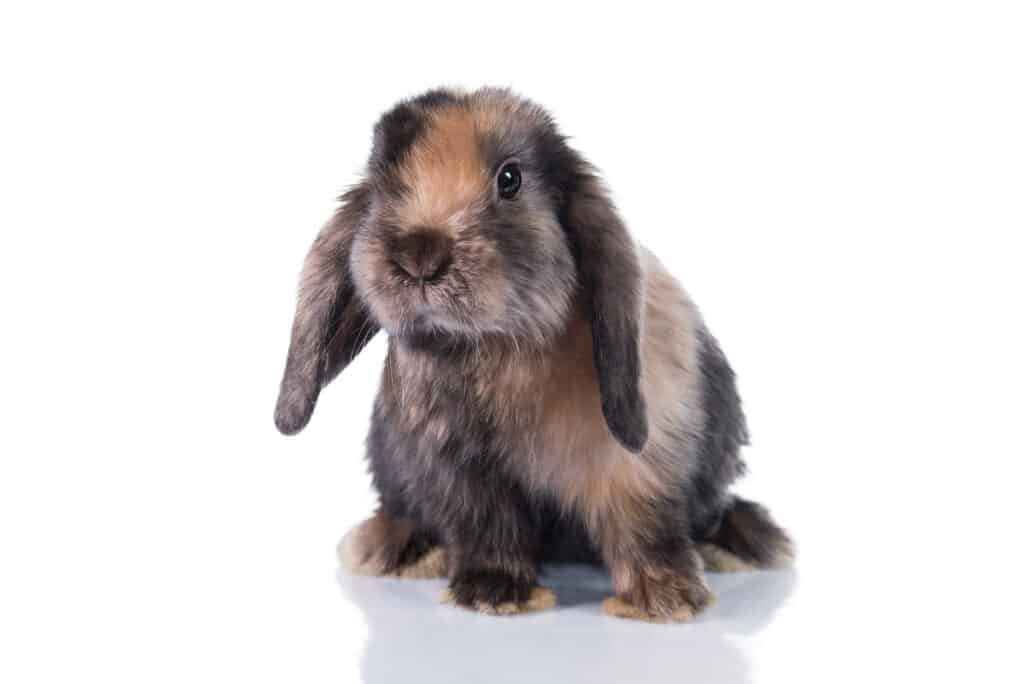
Mini Lops come in many color forms and fur patterns. The thick, dense fur makes them super cuddly for humans.
©iStock.com/Rita_Kochmarjova
These adorable bunnies start out as tiny balls of fluff that grow, typically to full size and maturity within 9 to 10 months. In some cases, though, this growth may continue until they reach about 1 year old.
Mini Lop Growth Rates
| Month | Weight in Ounces |
|---|---|
| 0 | 1.5 |
| 1 | 10 |
| 2 | 22 |
| 3 | 30 |
| 4 | 37 |
| 5 | 42 |
| 6 | 46 |
| 7 | 49 |
| 8 | 51 |
| 9 | 52 |
| 10 | 53 |
| 11 | 53 |
| 12 | 53 |
How Does the Mini Lop Compare in Size to the Largest Rabbit Breed?
The largest rabbit breed in the world goes by the name of the Flemish Giant. Males may reach over 50 pounds, though average weight is more like 20 pounds. They may hit lengths of 30 to 48 inches. This means these giants are about the same size as a terrier or as large as a bulldog.
How Does the Mini Lop Compare in Size to the Smallest Rabbit Breed?
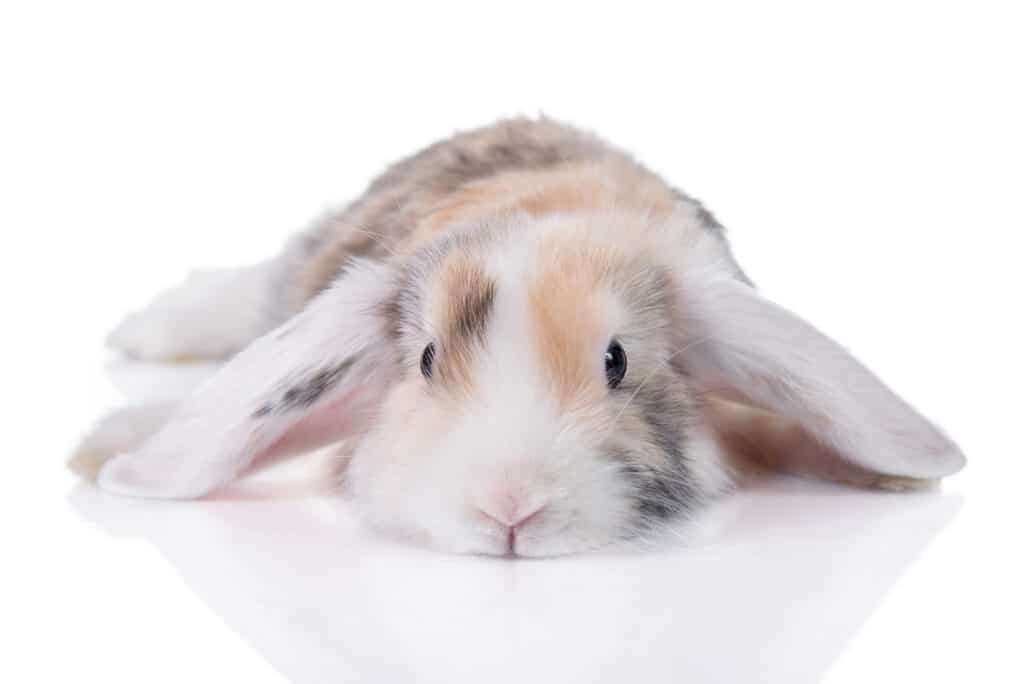
Their cute and cuddly appearance makes the Mini Lop a popular household pet. Long, floppy ears, button noses, and those oh, so soulful eyes!
©Rita_Kochmarjova/Shutterstock.com
The smallest domestic breed of rabbit goes by the name of the Netherland dwarf. These adorable, tiny bunnies weigh an average of 2 to 2.5 pounds. This tiny size was initially the result of a dwarfing gene, resulting in a short neck, rounded face, and other tiny features. They reach a shoulder height of just 5 to 6 inches, with bodies no more than 9 inches long. This means that mini lops are nearly twice the weight of Netherland dwarfs in many cases. They may actually may be a little shorter at the shoulder than Netherland dwarfs.
The photo featured at the top of this post is © Eric Isselee/Shutterstock.com
Thank you for reading! Have some feedback for us? Contact the AZ Animals editorial team.



